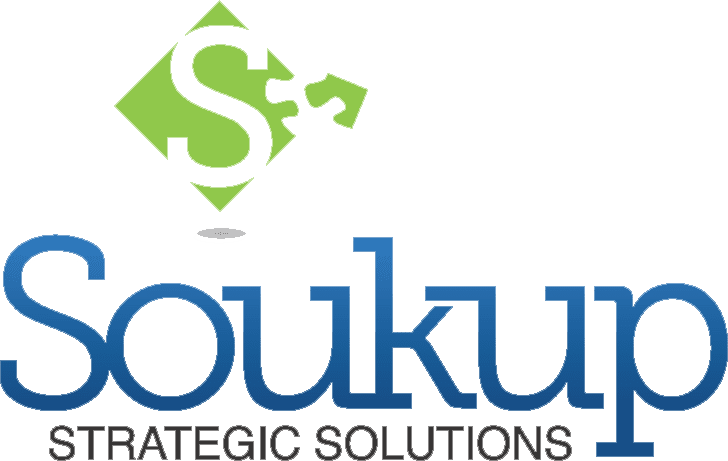In the dynamic and ever-evolving realm of fundraising, where the terrain of philanthropy stretches out like an expansive wilderness, mastering the art of donor cultivation is akin to embarking on a grand expedition into uncharted territories. It is a journey fraught with challenges and uncertainties, where every turn presents new opportunities and obstacles. Yet, amidst this vast landscape of possibility, lies the promise of transformative impact and profound connections that can change lives and shape futures. Fundraising adventurers are warmly welcomed to an exhilarating quest through the depths of donor cultivation, where passion meets purpose, and every step taken is a testament to the power of philanthropy to effect real change in the world. This journey serves as a donor cultivation roadmap, guiding organizations toward their philanthropic goals.
The following content aims to reinforce existing knowledge, introduce fresh ideas, and serve as a comprehensive guide for navigating the intricacies of managing the process of charting donor cultivation.
Moves Management: Navigating Your Path to Donor Cultivation Success
Embark on your journey with Moves Management, the reliable compass steering fundraisers through the complexities of donor cultivation. This strategic framework involves carefully orchestrated moves to foster meaningful relationships with donors, paving the way for philanthropic success. From initial engagement to stewardship and beyond, each move brings fundraisers closer to securing the prized treasure of donor loyalty.
Metrics: Guiding Your Fundraising Navigation
In the vast ocean of fundraising, metrics serve as the guiding stars that illuminate the path toward success. Maintaining meticulous records of donor interactions, gift amounts, and engagement levels is essential for effective navigation. Metrics not only track progress but also provide valuable insights into donor behavior and preferences, empowering fundraisers to tailor their approach for maximum impact.
It is essential to recognize that metrics serve a dual purpose in donor cultivation. Not only do they offer quantitative insights, but they also provide a narrative understanding of the progress made. Beyond mere numbers, metrics offer a story of engagement, revealing the journey of donors and the efficacy of fundraising efforts. Moreover, these metrics should not merely be passive observers but active participants in the planning process. They serve as guides for charting both short-term maneuvers and long-term strategies, offering invaluable direction in navigating the complex terrain of donor relations. By leveraging metrics effectively, fundraisers can not only measure success but also proactively manage the cultivation process, ensuring alignment with organizational goals and optimizing outcomes.
AI: Leveraging Artificial Intelligence for Donor Cultivation
Utilizing Artificial Intelligence (AI) to analyze donor data and predict donor behavior enhances organizations’ ability to effectively strategize donor cultivation. Database exports containing donor interactions, contributions, giving history, demographics, and engagement levels serve as invaluable resources for any charting system in use. Upon uploading similar databases, generative artificial intelligence can generate text, images, videos, or other data using machine learning algorithms to identify patterns and forecast which donors are most likely to contribute in the future, as well as recommend the most effective cultivation strategies. This capability assists in prioritizing efforts and tailoring approaches for each donor, ultimately leading to improved fundraising outcomes. Additionally, AI streamlines tasks such as personalized communication (mail merge, email merge) and donor segmentation, enabling organizations to focus on nurturing relationships with donors. The paid version of ChatGPT Plus amplifies this remarkable tool, offering advanced capabilities for analyzing databases and other quantitative documents.
Stewardship: Cultivating Relationships with Care
Stewardship is the cornerstone of nurturing strong relationships with donors, akin to tending a flourishing garden. Regular touchpoints, heartfelt expressions of gratitude, and personalized gestures demonstrate appreciation and ensure donors feel valued. Remember, a satisfied donor is a generous donor!
Personal Outreach: Crafting Connections through Individualized Attention
Personal outreach lies at the heart of cultivating meaningful connections with donors. Whether through handwritten notes, phone calls, or face-to-face meetings, taking the time to connect with donors on a personal level fosters deeper engagement and loyalty. Personalized outreach demonstrates to donors that they are valued partners in the organization’s mission.
Journal Entries: Documenting Your Journey for Cultivation Success
Keep a detailed record of your fundraising journey through comprehensive journal entries. From the initial discovery of donor interests to the final stages of stewardship, documenting every interaction in development software provides invaluable insights for future cultivation efforts. These entries serve as a roadmap, guiding fundraisers toward their goals with clarity and precision.
Assessing Capacity and Ability to Give: Uncovering Donor Potential
Every donor possesses unique capacities and motivations waiting to be discovered. Assessing a donor’s philanthropic interests and financial capabilities requires careful examination and understanding. By uncovering donors’ motivations and resources, fundraisers can tailor their cultivation efforts to maximize impact and engagement.
Hot Buttons: Unlocking the Power of Donor Passion
Every donor is driven by their own passions and interests, often referred to as “hot buttons.” Whether it be education, healthcare, or environmental conservation, identifying these hot buttons is key to unlocking the potential for philanthropic giving. By aligning fundraising efforts with donor passions, fundraisers can inspire greater generosity and impact. This aspect of cultivation is often overlooked and “asks” more of the organization to meet institutional demands and needs and those higher up in the decision-making process. But at the same time, do not discount the power to convince and persuade prospective donors to buy in on the causes or “case for support,” previously laid out.
Cultivation Steps: Plotting Your Course to Success
Embark on a strategic journey through the stages of donor cultivation:
- Discovery: Cast a wide net to identify potential donors aligned with your organization’s mission and values.
- Qualification: Assess donors’ capacity and inclination to give, ensuring they are suitable prospects for cultivation.
- Cultivation: Foster meaningful relationships through personalized outreach, stewardship, and engagement initiatives.
- Solicitation: Present compelling opportunities for donors to invest in your cause, making the ask with confidence and clarity.
- Stewardship: Demonstrate appreciation and provide ongoing support to donors, ensuring continued engagement and loyalty.
- Renewal: Secure ongoing support through strategic stewardship efforts and regular communication.
- Upgrade: Identify opportunities to increase donors’ giving levels through targeted initiatives and major gift opportunities.
Tracking Progress: Navigating Toward Your Goals
Regularly monitor your progress and adjust your course as needed:
- Utilize development software to track metrics, log journal entries, and monitor donor interactions.
- Review progress against cultivation goals and adjust strategies accordingly to ensure alignment with objectives.
- Continuously assess and refine your approach to maximize effectiveness and impact.
- Reassess the interests of individuals based on the case presented and indications of their hot buttons.
Example: The Journey of a Generous Donor Couple
Let us consider the story of a generous donor couple, Mr. and Mrs. Smith, as they navigate the journey of donor cultivation:
Discovery: Mr. and Mrs. Smith are introduced to the organization through a mutual connection. Intrigued by the cause, they express interest in learning more about how they can contribute.
Qualification: Fundraisers assess Mr. and Mrs. Smith’s capacity and inclination to give, discovering their passion for education and their substantial financial resources.
Cultivation: Fundraisers embark on a journey to cultivate relationships with Mr. and Mrs. Smith, inviting them to exclusive events and engaging them through personalized communications and stewardship efforts.
Solicitation: With the relationship established, fundraisers make a compelling ask, presenting Mr. and Mrs. Smith with a unique opportunity to support a scholarship program for underprivileged students.
Stewardship: Mr. and Mrs. Smith are delighted to contribute and receive heartfelt thank-you notes, along with regular updates on the impact of their donation.
Renewal: Recognizing the importance of ongoing support, fundraisers continue to steward Mr. and Mrs. Smith, securing their commitment to support future initiatives.
Upgrade: As Mr. and Mrs. Smith’s passion for education grows, fundraisers identify opportunities to increase their giving through targeted campaigns and major gift opportunities.
In any professional pursuit, possessing the necessary tools, resources, guidance, and counsel is just the beginning. Success hinges on execution, diligent stewardship, and consistent follow-up. Even the most skilled individuals can falter in this regard. Therefore, despite the wealth of advice provided in this article, as well as in books, seminars, or lectures, it is the personal conviction and drive of the individual professional that will truly determine the success of their donor cultivation efforts.
In conclusion, dear fundraisers, mastering the art of donor cultivation requires careful planning, strategic execution, and unwavering dedication. By leveraging moves management, metrics tracking, stewardship practices, and personalized outreach, fundraisers can chart a course toward philanthropic success and make a lasting impact on their organizations and communities. So, set your course, navigate with confidence, and embark on the journey of charting donor cultivation with determination and purpose.






